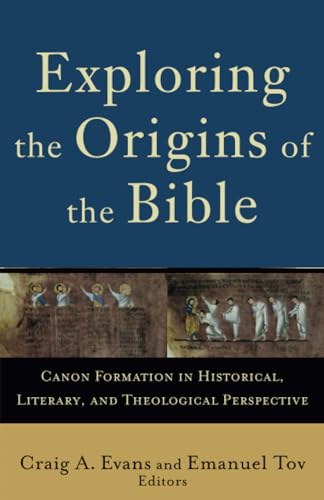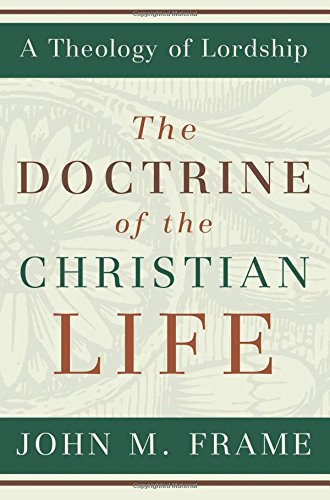A Reader’s Hebrew Bible
Written by A. Philip Brown II and Bryan W. Smith, eds. Reviewed By Christopher W. CowanWhile students of the biblical languages have been served by reader’s lexicons of the Old and New Testaments for several decades, reader’s editions of the biblical texts themselves are a new and welcomed innovation. Given the publication of reader’s editions of the Greek NT in the last several years, it was only a matter of time before a reader’s edition of the Hebrew OT was produced. A Reader’s Hebrew Bible (hereafter, RHB) is the first of its kind, published by Zondervan—whose A Reader’s Greek New Testament is currently in its second edition (2007).
RHB is edited by A. Philip Brown II, associate professor of Bible and Theology at God’s Bible School and College in Cincinnati, Ohio, and Bryan W. Smith, Bible integration coordinator at Bob Jones University Press. According to the editors, the goal of RHB is to “facilitate the regular reading of the Scriptures in Hebrew and Aramaic.” As with the Greek NT, the great challenge to reading the Hebrew OT with proficiency is acquiring an adequate vocabulary. Memorizing vocabulary is one of the most difficult—yet essential—aspects of learning a language. In the case of the OT, the difficulty is compounded, given the greater total number of vocabulary and of rare words than are in the NT. A few statistics may help make the picture clear.
There are roughly 8,600 total vocabulary words in the OT. About 600 of them occur fifty times or more, accounting for approximately 80% of OT word occurrences. This is what most theological students will have memorized after two or three semesters of Hebrew—an encouraging accomplishment. The remaining 8000 OT vocabulary words only account for 20% of all word occurrences. This latter fact sounds great, until one realizes that this 20% actually translates into 84,000 word occurrences—no small number!
This is why RHB is such a helpful tool to aid students, pastors, and scholars in reading proficiency. It includes the Hebrew and Aramaic Bible using the Westminster Leningrad Codex version 4.4 (maintained by the Alan Groves Center for Advanced Biblical Research), which is almost identical to BHS and BHQ, but without a textual apparatus (RHB is, of course, not intended to replace such critical editions of the Hebrew text). Words occurring 100 times or less in the Hebrew Bible are marked numerically in the text. The footnoted glosses for these words are then provided at the bottom of each page. Thus, readers spend less time referencing a lexicon and more time actually reading.
Other features include the following: (1) Hebrew proper nouns appearing less than 100 times are screened in gray in the text. Aramaic proper nouns occurring less than 25 times are also screened in gray. This graciously prevents readers from searching the lexicon in vain for a word that happens to be person’s name! (2) Each footnoted entry at the bottom of the page includes the Hebrew lemma, the stem (for verbs), and glosses from HALOT and BDB (and sometimes alternate sources) that are in most cases context-specific. (3) In the “Introduction,” the editors provide a detailed and helpful explanation of the method behind their gloss listings. (4) Appendix A offers a glossary of words occurring more than 100 times in the Hebrew Bible. This is also available as a downloadable PDF file from the Zondervan website that can be printed and folded into a booklet. (5) Appendix B is a list of differences between the Leningrad Codex and BHS. (6) RHB comes in a nice Italian Duo-Tone binding—no doubt making it much more affordable than a hardback. In terms of size, RHB is a bit larger than BHS (9.9 × 7.2 × 2.1 inches compared to 7.6 × 5.6 × 1.6, respectively), but not cumbersome. For its size, it is surprisingly lightweight. The pages are thin, allowing you to see the text on the opposite side. But this is not distracting. Thicker paper would certainly have produced a more massive product
My only criticism of RHB is that the footnoted gloss list at the bottom of the page is in paragraph style, like Zondervan’s A Reader’s Greek New Testament. I much prefer the layout of the UBS Greek New Testament: A Readers Edition (Hendrickson, 2007), in which the glosses are presented in two columns. In my opinion, the column layout is more user-friendly. The paragraph layout in RHB, in comparison, can make it a little more difficult to find the appropriate gloss quickly.
One should also note that the chief advantage of a reader’s edition (whether of the OT or NT) holds the seeds of a potential danger. The reader who is freed from the frequent need to look up words in a lexicon may, as a result, assume he understands the meaning of a word by simply reading the gloss. But familiarity with Hebrew and Greek lexica is essential to understanding the nuances of meaning that a given word can have in various contexts. Serious exegetical study requires that Bible students not dispense with their BDB lexicon when they acquire RHB. I am grateful that the authors address this concern in their Introduction and warn against it.
Many wonderful resources are available today to assist in learning the biblical languages. However, nothing improves one’s ability to read Hebrew like actually reading Hebrew! A Reader’s Hebrew Bible admirably facilitates this goal. The editors should be commended for their work.
Christopher W. Cowan
The Southern Baptist Theological Seminary
Louisville, Kentucky, USA
Other Articles in this Issue
We begin with a question of translation. Many translations place a period after the word “conviction” in 1 Thess 1:5: “in power and in the Holy Spirit and with full conviction...
The Inexhaustible Fountain of All Good Things: Union with Christ in Calvin on Ephesians
by Lee GatissJuly 10, 2009 was the 500th birthday of the acclaimed French Reformer John Calvin...
The name of Martin Luther is perpetually linked to the doctrine of justification by faith alone...
Of the many questions currently surrounding the discussion about justification, the relationship between justification and spiritual fruit merits attention...
Every year a few students ask me my thoughts about whether they should pursue doctoral studies and I respond with what has come to be known as ‘The Speech...







